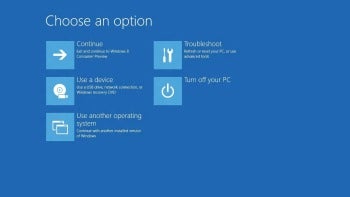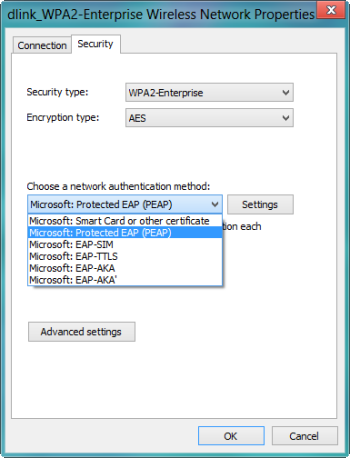Nevertheless, Windows 8 has new features and improvements aplenty to consider. So here I’ll introduce many that you—as a business user, owner, or IT administrator—might find useful. There’s something for everyone with improvements to security, networking, virtualization, recovery, and more.
UEFI Replaces BIOS to Enhance and Secure Booting
Microsoft will require that new PCs bearing the Windows 8 logo use a new boot solution called Unified Extensible Firmware Interface (UEFI), which will significantly improve the boot process and experience. It replaces the archaic Basic Input Output System (BIOS) that we’ve used for decades. Windows 8 and UEFI provide a new advanced boot interface and options, including mouse support.
Windows 8 and UEFI provide a new advanced boot interface and options, including mouse support.You’ll see much faster boot times, on the order of 8 seconds from pressing the power button to being in Windows. This, along with less need for restarts, can help increase productivity in the office and save IT personnel time when applying upgrades or installing software.
Safeguards built into UEFI can also help save the IT department time and resources over the long term. Secure Boot prevents unauthorized operating systems from loading, and Early Launch Anti-Malware (ELAM) protects against boot loader attacks. UEFI will also allow remote diagnostics and repair of computers within the pre-OS environment. So instead of physically sending a technician to visit a PC experiencing boot issues, it might be possible to repair and restore the machine over the network.
Though most will enjoy the benefits of UEFI, there has been some controversy over the Secure Boot feature of UEFI that Microsoft is requiring PC makers to turn on by default. It’s not totally clear yet, but Secure Boot may have to be manually disabled for those who want to install or dual boot another OS such as Linux, adding an extra step to the process.
Full Windows Experience on x86-Based Tablets
We’ve seen good enterprise support from BlackBerry smartphones and iOS devices, and business users have adopted these platforms accordingly. We’ll likely see the same with x86-based Windows 8 Pro tablets and tablet-laptop hybrids, as they’ll offer the new metro-style Start screen in addition to the full Windows environment. This means that tablet users can have the same familiar Windows applications, including a full copy of Microsoft Office 2013, and Metro-style apps on both their desktop PC and their mobile device. For IT staffers, this means easier device and network management as they can use an existing Windows management infrastructure.Bear in mind that these benefits apply only to x86-based tablets loaded with Windows 8 Pro. Tablets with ARM processors running Windows Run Time (RT) will support only the Metro-style apps, so they won’t be able to deliver the full Windows experience.
Windows To Go Lets Users Take Their Workstation With Them
The new Windows To Go feature in Windows 8 Enterprise will allow you put a clean install or an existing Windows 8 image onto a 32GB or higher USB thumb drive or a portable drive and boot it from another PC. This is similar to what you might have seen with Linux distributions running from a live CD or a USB drive. Although booting up a Windows To Go drive is officially supported only on PCs certified for Windows 7 and later, it might also work on PCs running Windows XP and Vista.Windows To Go can be useful for telecommuters and temporary contractors, because they can essentially fit an entire PC environment--loaded with the all the apps, settings, and files they need--in their pocket and boot into it with their own PC. This would be much more efficient than having to carry a physical computer from place to place. Windows To Go could also make the perfect backup OS for PCs that become infected or corrupt. And it can be managed by and secured with standard enterprise management tools such, as SCCM (System Center Configuration Manager) and Active Directory group policies, just like an ordinary Windows PC. The USB drive can also be encrypted with BitLocker to prevent data theft if it’s ever lost or stolen.
New Network Authentication Types Ease the Connection Process

You’ll find the EAP authentication options when configuring networks.Microsoft added support for a several new network authentication types to Windows 8. The WISPr (Wireless Internet Services Provider roaming) protocol allows users to roam from one Wi-Fi hotspot connection to the next, regardless of which ISP is running the hotspot, much as a cell-phone user is able to roam between cellular carriers.
The EAP-SIM, EAP-AKA, and EAP-AKA Prime (EAP-AKA') protocols can provide native authentication when connecting to mobile 3G/4G broadband networks. And the addition of support for the EAP-TTLS protocol means that enterprises and campuses won’t need to install a third-party client on PCs when implementing this 802.1X authentication type on their networks.
Via PCworld
No comments:
Post a Comment